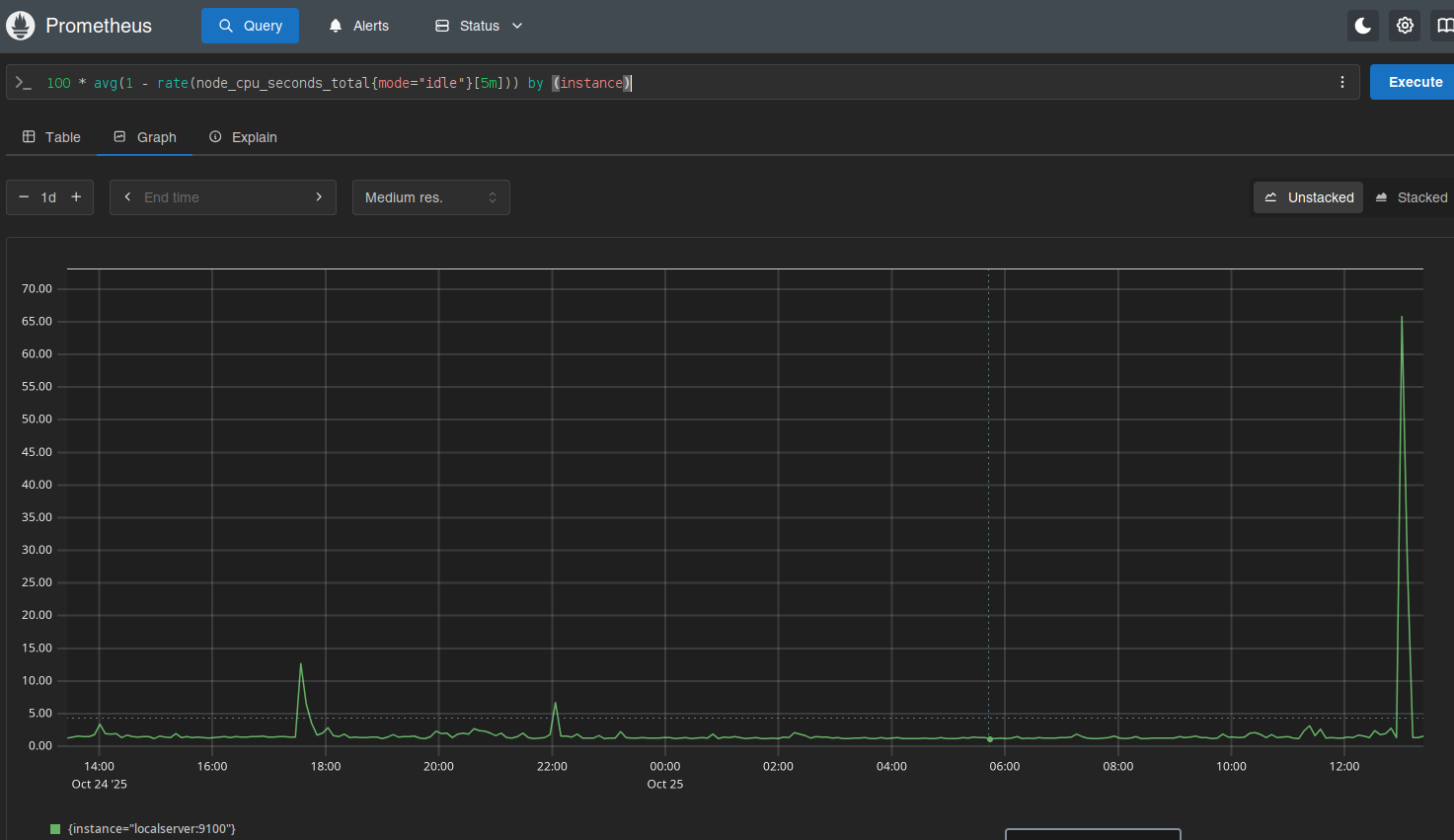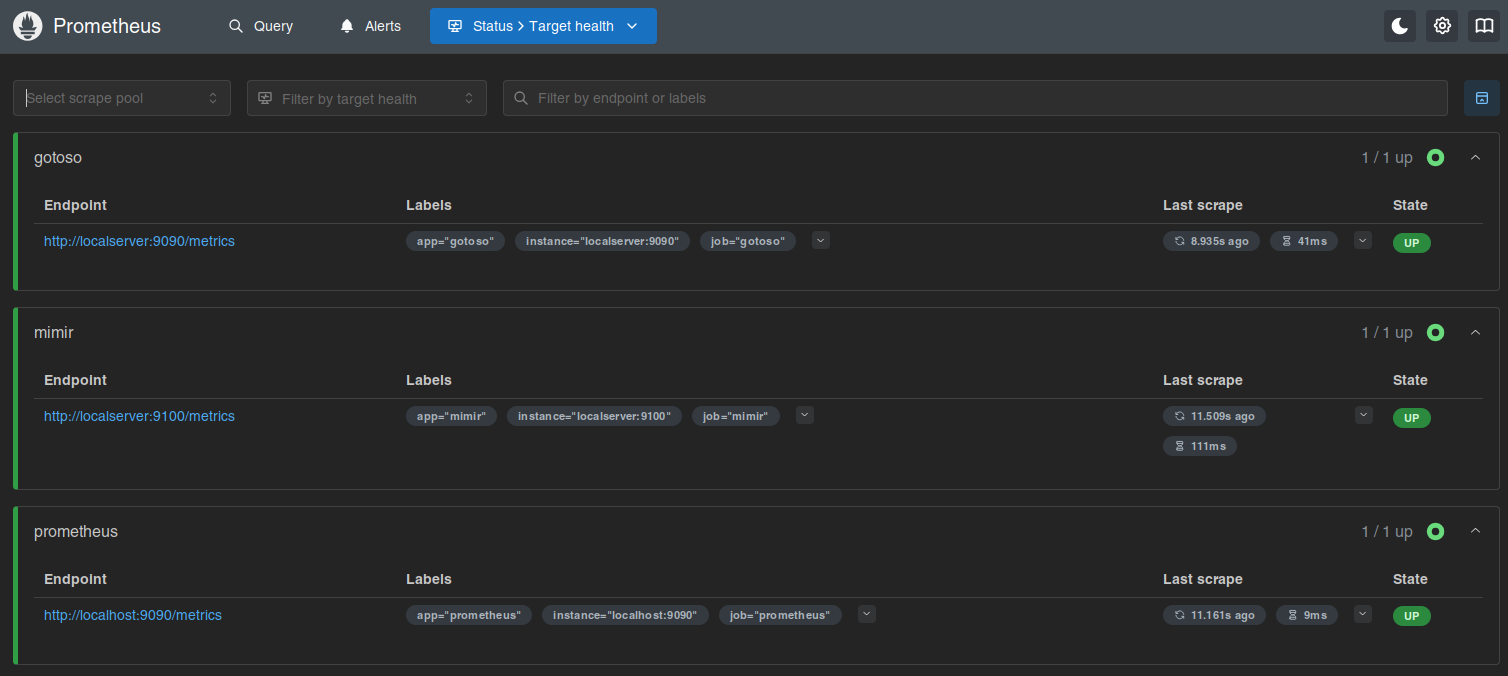
Numa discussão no fediverso falamos sobre habilitar as métricas do GoToSo, também conhecido como GoToSocial. Fiz algumas mudanças e consegui expor essas métricas.
O compose.yaml do GoToSo:
services:
gotosocial:
image: docker.io/superseriousbusiness/gotosocial:latest
container_name: gotosocial
user: 1000:1000
networks:
- gotosocial
environment:
GTS_HOST: bolha.linux-br.org
GTS_DB_TYPE: postgres
GTS_CONFIG_PATH: /gotosocial/config.yaml
[...]
OTEL_METRICS_PRODUCERS: prometheus
OTEL_METRICS_EXPORTER: prometheus
OTEL_EXPORTER_PROMETHEUS_HOST: 0.0.0.0
OTEL_EXPORTER_PROMETHEUS_PORT: 9090
[...]
ports:
- "8080:8080"
- "9090:9090"
[...]
A config.yaml também do GoToSo:
[...]
media-emoji-local-max-size: 250KiB
media-emoji-remote-max-size: 250KiB
advanced-rate-limit-requests: 0
metrics-enabled: true
Uma vez que isso estava habilitado e o container reiniciado, foi só verificar a porta 9090.
❯ curl -s localhost:9090/metrics | head -10
# HELP go_config_gogc_percent Heap size target percentage configured by the user, otherwise 100.
# TYPE go_config_gogc_percent gauge
go_config_gogc_percent{otel_scope_name="go.opentelemetry.io/contrib/instrumentation/runtime",otel_scope_schema_url="",otel_scope_version="0.63.0"} 100
# HELP go_goroutine_count Count of live goroutines.
# TYPE go_goroutine_count gauge
go_goroutine_count{otel_scope_name="go.opentelemetry.io/contrib/instrumentation/runtime",otel_scope_schema_url="",otel_scope_version="0.63.0"} 167
# HELP go_memory_allocated_bytes_total Memory allocated to the heap by the application.
# TYPE go_memory_allocated_bytes_total counter
go_memory_allocated_bytes_total{otel_scope_name="go.opentelemetry.io/contrib/instrumentation/runtime",otel_scope_schema_url="",otel_scope_version="0.63.0"} 1.6433066284e+11
# HELP go_memory_allocations_total Count of allocations to the heap by the application.
Em seguida subi um container, também com podman, pra coletar esses dados. Junto com um prometheus-exporter pra coletar dados da máquina.
compose.yaml:
services:
prometheus:
image: quay.io/prometheus/prometheus
container_name: prometheus
environment:
TZ: Europe/Stockholm
ports:
- "9000:9090"
volumes:
- data:/prometheus
- ./prometheus.yml:/etc/prometheus/prometheus.yml:ro
restart: unless-stopped
extra_hosts:
- localserver:192.168.1.2
volumes:
data:
prometheus.yml:
global:
scrape_interval: 15s
evaluation_interval: 15s
scrape_configs:
- job_name: "prometheus"
static_configs:
- targets:
- "localhost:9090"
labels:
app: "prometheus"
- job_name: "mimir"
static_configs:
- targets:
- "localserver:9100"
labels:
app: "mimir"
- job_name: "gotoso"
static_configs:
- targets:
- "localserver:9090"
labels:
app: "gotoso"
Isso já faz subir e você pode olhar no target health.

Daí é deixar o Prometheus coletar os dados e depois olhar os gráficos.

Ninguém me segurou, mas também não instalei o Grafana.
Por enquanto...

